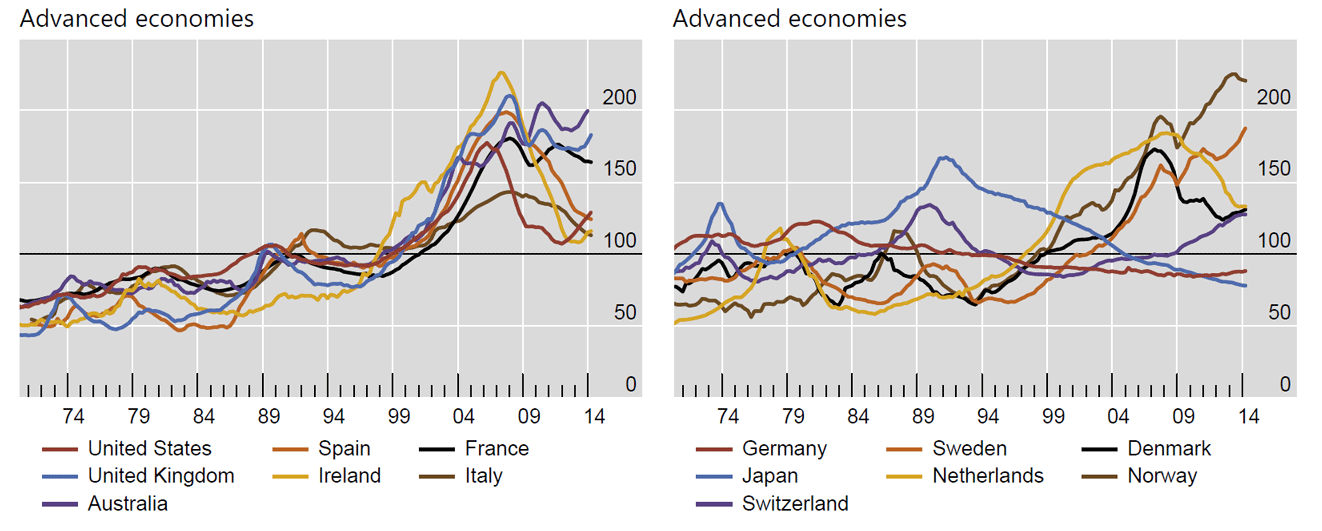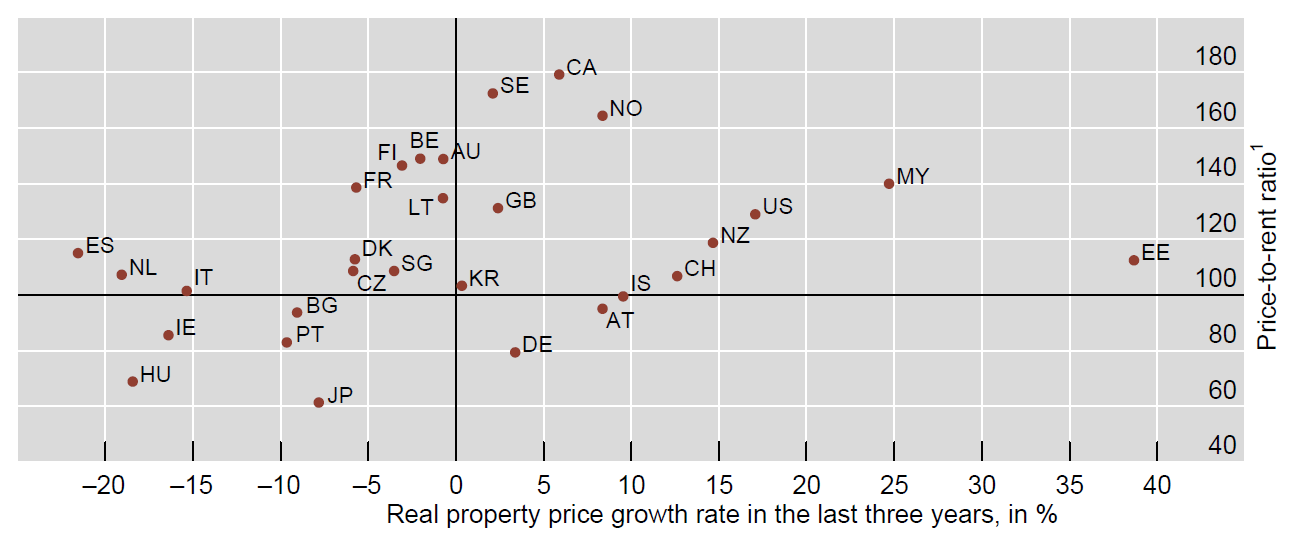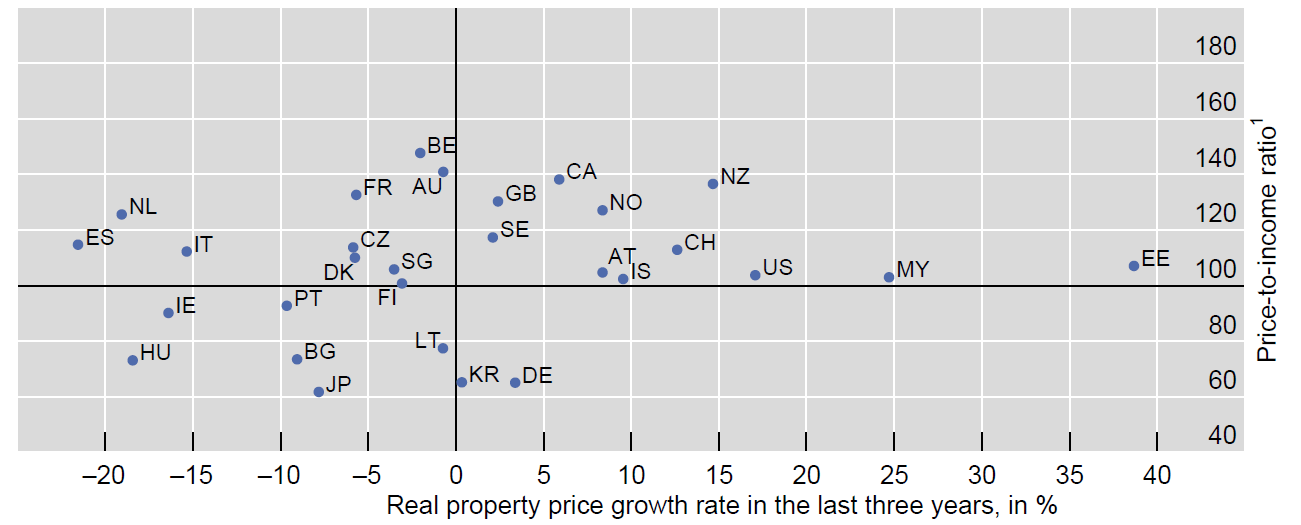The BIS has published the latest data from their analysis of house prices across countries. “The BIS currently publishes more than 300 price series for 55 countries, among which it has selected one representative series for each country. For 18 countries, it also publishes series that span the period back to the early 1970s. House prices can serve as key indicators of financial stability risks, as property booms are often the source of vulnerabilities that lead to systemic crises.”
They show that in trend terms, after correcting for inflation and seasonality, Australian prices are relatively higher than other advanced countries. This is consisted with data from the IMF, Economist, and DFA’s own analysis. “Year-on-year residential property prices, deflated by CPI, rose by 9.5% in the United States and 6% in the United Kingdom. Real house prices also grew, by 7% in Canada, 7.7% in Australia and 2.2% in Switzerland, three countries that were less affected by the crisis, as well as in some countries that were severely affected by the crisis, such as Ireland (+7.2%) and Iceland (+6.4%)”.
 They also show the relative benchmark between house price growth and price to rent. Here, overall average house price growth, after inflation, in Australia is close to zero over the last three years (because of averages across the states, the ABS shows how prices vary state by state), and Australia has high price to rent rations, but not the highest. This is because rents are more linked to interest rates and income growth than house prices directly.
They also show the relative benchmark between house price growth and price to rent. Here, overall average house price growth, after inflation, in Australia is close to zero over the last three years (because of averages across the states, the ABS shows how prices vary state by state), and Australia has high price to rent rations, but not the highest. This is because rents are more linked to interest rates and income growth than house prices directly.
 Turning to their other measure, comparing house prices to income ratios (the measure we prefer as the best judge of house prices), we find that Australia is shown as the second highest, after Belgium, despite the close of zero growth in absolute prices, after inflation, in the past 3 years.
Turning to their other measure, comparing house prices to income ratios (the measure we prefer as the best judge of house prices), we find that Australia is shown as the second highest, after Belgium, despite the close of zero growth in absolute prices, after inflation, in the past 3 years.
 The codes for the various countries are listed below:
The codes for the various countries are listed below:
Work at the BIS has pointed to the early warning indicator properties of real estate prices. Leverage fuelled housing booms that turn into busts have so often been at the very heart of episodes of systemic distress. Historical experience has demonstrated that the interactions between rapidly growing house prices and excessive credit expansion are a tell-tale sign of the build-up of vulnerabilities in the household sector and the source of future losses for banks.


One thought on “Further High House Price Evidence – BIS”